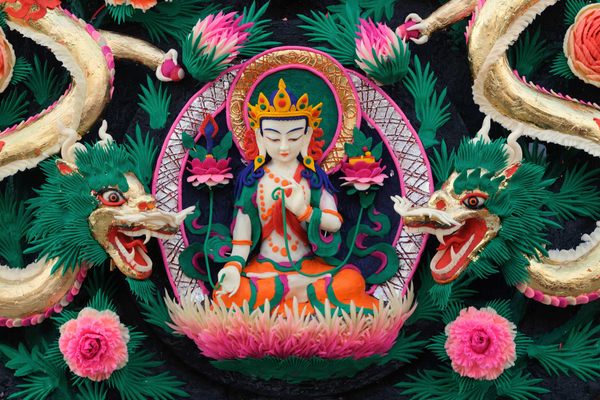High up in the Himalayas, where resources are scarce and conditions can be harsh, soft lights burn day and night in Tibetan Buddhist temples. These flickering chalice-shaped votives are not fueled by wax or electricity. They’re fueled by yak butter. Made from separating fat from yak’s milk, the butter and the lamps they fuel are central to Tibetan Buddhist religious practices and ceremonies, such as the Monlam Prayer Festival (which features a butter lamp festival on its fifteenth day).
Used as a source of focus for meditation, the butter lamp’s glow represents the pursuit of enlightenment. Its flickering, however, can also represent life’s impermanence and the darkness and difficulties against which all living things struggle. In addition to lamps that might already exist at the temples, Buddhist monks also tend to the yak butter lamps that have been brought by locals and pilgrims as offerings. The lamps can be small and made from simple materials or large, drum-like basins that are gilded and decorated with Buddhist symbols, such as the lotus.
Where to Try It
-
Jokhang Temple
Chengguan, Lhasa, Lhasa, Tibet, 850000, ChinaBuilt in the seventh century, this monastery is a pilgrimage site for Tibetan Buddhists. There will be many butter lamps on display when the temple hosts the Monlam Prayer Festival to celebrate the Tibetan New Year (which occurs between January and March).
Written By
 Leigh ChavezBush
Leigh ChavezBush















